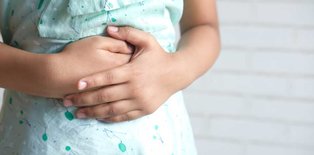Sleep: How To Keep Your Baby Safe

Having a baby is the most joyful event in a parent’s life. But sadly, nearly 3,500 babies die suddenly each year in the United States from sleep-related causes.
Parents bringing home new infants from the hospital may feel nervous, overwhelmed, and exhausted. Sometimes it may feel easier to sleep with your baby in bed with you. New parents may also feel it is best for baby and is another way to bond with your newborn.
Unfortunately co-sleeping with your baby is very dangerous and is associated with what is known as sudden infant death syndrome, or SIDS. SIDS is the unexplained death of an otherwise healthy baby under one year of age, usually during sleep.
We understand that all parents think it could never happen to them. Until it does.
While SIDS may be unexplained, there are things all parents and caregivers can do to help prevent that unthinkable tragedy. We want to help you prevent that tragic event from occurring by sharing with you the tips from the American Academy of Pediatrics (AAP).
Recommendations to keep baby safe
The AAP developed recommendation to help parents of infants create a “safe sleep environment” so these tragedies can be avoided.
To make a safe sleep environment for your baby, follow these recommendations.
- First and most important is to place your baby to sleep on his or her back.
- Baby’s bed should be a firm sleep surface. Even if a mattress is considered “firm,” if something placed on the surface leaves an impression when lifted, it is too soft for baby. Never put a baby to sleep on a sofa, armchair or pillow.
- The baby should sleep alone.
A boring crib is a safe crib
I like to say that a boring crib is the safest crib. While it may look cozy, parents should avoid putting anything into the crib or bassinet that is soft or is an unnecessary extra for baby. That includes soft bedding, blankets, crib bumpers or stuffed toys. Not only do these items not protect babies, but they can be hazardous. Crib sheets should be tightly fitted.
We all want our babies to be warm and comfortable. A blanket, though, can strangle or suffocate a baby as he or she moves. Instead, we recommend a one-piece sleeper for babies that looks like a sleeping bag with arms. It is safe and will keep baby warm.
Share a room, not a bed
While sharing a bed with your baby can be a danger, sharing a room has been shown to decreases the risk of SIDS. Having a bassinet or crib in your bedroom for baby is safe.
Other tips:
- Infants are at greatest risk for sleep-related deaths and SIDS until four months of age. The risk, while lower, continues until the baby is a year old. During that time, and of course throughout your child’s life, it is important to avoid a baby’s exposure to smoke, alcohol, or illegal drugs. Also, a parent or caregiver who is smoking, or using alcohol or drugs can pose a threat to your baby and increase the risk of SIDS.
- Breastfeeding has been shown to provide added protection against SIDS. It’s important to remember to breastfeed in a place where mom will not fall asleep. While the idea of waking up and feeding your infant in bed sounds cozy, it’s hard not to fall asleep. Getting up can be difficult for an exhausted parent, but getting out of bed will wake you up enough to feed baby and then return baby to a safe sleeping space.
- There is evidence that the longer you share a bed with your baby, the more dangerous it is because of deeper sleep. So if you do fall asleep while feeding baby in bed, as soon as you awaken, place your infant on his or her back on a separate sleep surface.
- Offer a pacifier at bedtime. There is evidence that shows that pacifiers can reduce the risk of SIDS as well.
- It’s important to not take naps on a sofa or cushioned chair because this offers an opportunity for baby to become wedged between the parent and the cushion. Even if you think “it would never happen to you” it can. Anything can happen, especially when you’re exhausted.
- “Tummy time.” It’s important for your baby to spend some time each day on his or her belly. This will offer a way for baby to develop his or her neck and shoulder muscles, which helps your infant to build strength and develop normally. It enables them to move around and gives them strength to move away from things that are blocking their airway.
We know your baby is precious and you want to keep baby safe. We are here to help.
For more information on sleep safety for your baby, please visit our website.

About the Author:
Amy Goldberg, MD
Dr. Amy Goldberg is a pediatrician at Hasbro Children’s Hospital and is a member of the team in its Lawrence A. Aubin Sr. Child Protection Center.
Child Protection Program »
Lifespan Living Newsletter
Find a Doctor

The right provider is in our network
Search more than 1,200 providers in our network.



